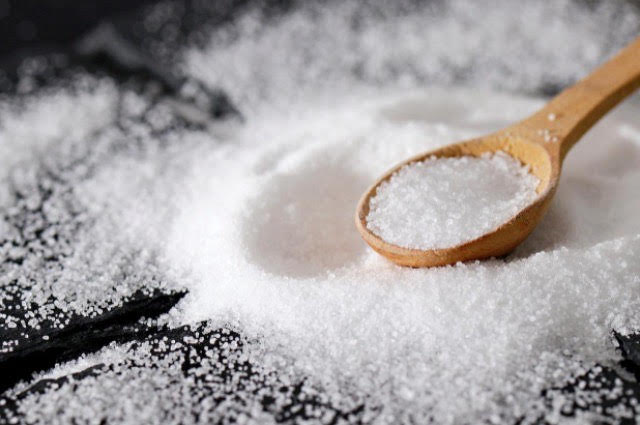
The Power of Salt by W1tchsbrew
Be sure to check her Etsy shop Wood ov Wyrd
Salt in History:
For centuries, salt has been known as a very magical, and also valuable, ingredient.
Salt was very important in the grand scheme of human civilization.
In the early days of mankind, prior to industrialization, the process of harvesting salt was time consuming and labor intensive. This meant that salt was a valuable commodity and only wealthy people could afford it.
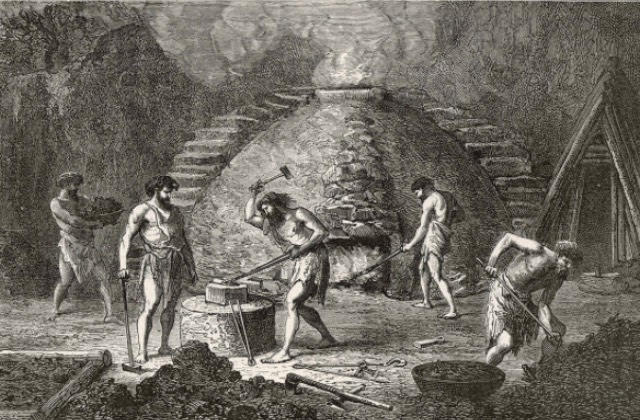
The first records of salt being produced and consumed were in the Sichuan province of China around 3000 BCE. Salt was also used in ancient Egypt from as early as 2000 BCE, for curing fish and meat.
The ancient Romans actually paid their soldiers with salt. The word “salary” even has its root in the Latin word for salt.
Natron or native soda, a natural compound of sodium salts, was a very important product in ancient history. It was produced in Egypt, Middle East and Greece. Natron was used for medicine, cookery, agriculture, in glass-making and to dehydrate Egyptian mummies.
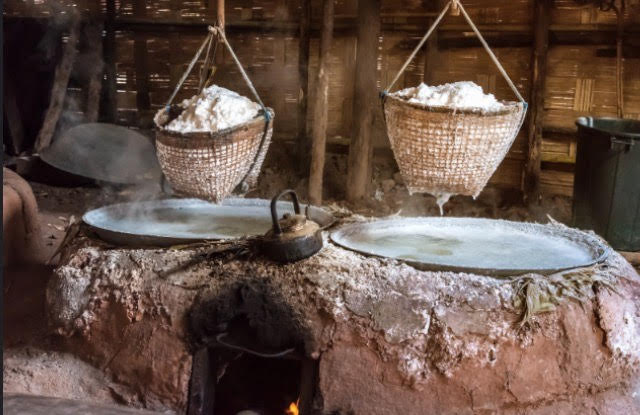
The first Native Americans “discovered” by Europeans in the Caribbean were actively harvesting sea salt on St. Maarten.
When the major European fishing fleets discovered the Grand Banks of Newfoundland at the end of the 15th century, the Portuguese and Spanish fleets used the “wet” method of salting their fish onboard, while the French and English fleets used the “dry” or “shore” salting method of drying their catch on racks onshore.
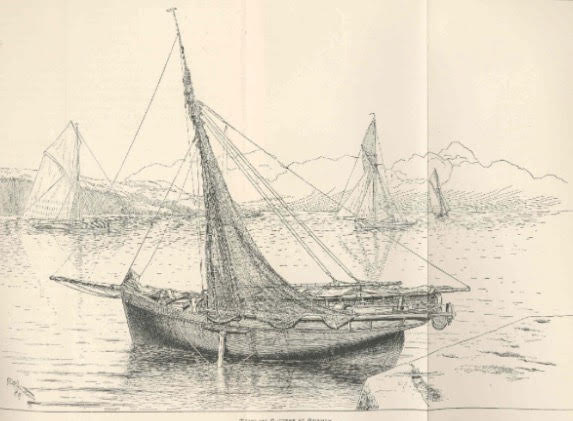
Due to this early food processing, French and British fishermen became the first European inhabitants of North America since the Vikings a half-century earlier.
Had it not been for the practice of salting fish, Europeans might have confined their fishing to the coasts of Europe and delayed “discovery” of the New World.

Historically, salt also had military significance. For instance, it is recorded that thousands of Napoleon’s troops died during his retreat from Moscow because their wounds would not heal due to the lack of salt.
In 1777, the British Lord Howe was jubilant when he succeeded in capturing General Washington’s salt supply.
If we look more into to American history, destinies were decided by salt. During the Civil War, salt was a precious commodity used, not only for eating, but for tanning leather, dyeing clothes and preserving troop rations.
Aside from flavoring and preserving food or even tanning and dyeing, salt has also been used in bleaching, and the production of pottery, soap, and chlorine. Today, it is widely used in the chemical industry.
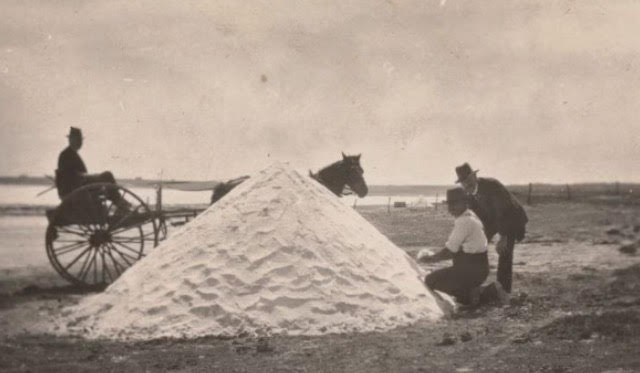
There are many different kinds of salt with many different uses. In its natural state, salt is normally found as the mineral halite, commonly called rock salt.
Not surprisingly, the word halite is derived from the Greek word halos meaning “salt.” Halite is usually found in and around salt springs, salt lakes, and in the ocean.
Salt in Folklore:
In many Eastern belief systems, such as Buddhism and Shintoism, salt is used both as a purifier and to repel evil.
In parts of Germany, Normandy, and Scotland, salt is used in or around a butter churn to keep witches from souring the butter or harming the cow from which the cream was obtained.

Irish folk remedies include the use of salt, combined with a recitation of the Lord’s Prayer, to cure those who might have been “fairy-struck.”
A similar story comes from Bavaria and Ukraine, in which salt is used to determine if a child is bewitched.
Egyptian caravans setting out on a journey across the desert used to perform a ritual that involved burning salt on hot coals. This was done to ensure that evil spirits wouldn’t get in the way of the travelers.
Types of salt and their uses:
Himalayan Pink Salt
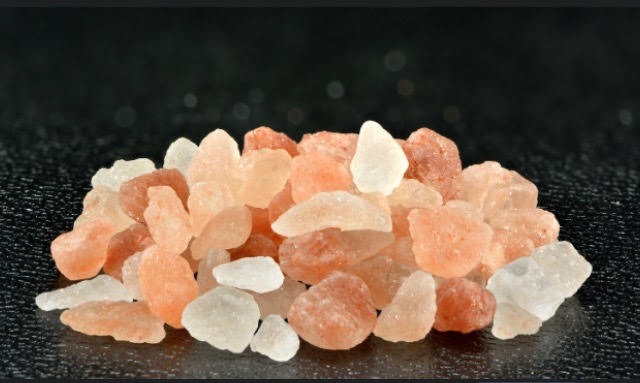
The purest of all salt, Himalayan pink salt is harvested from the Khewra Salt Mine in the Himalayan Mountains of Pakistan. Easily recognizable because of its pink color, this salt contains all 84 natural minerals found in the human body.
Health benefits:
One of the most notable health benefits of Himalayan pink salt is its ability to help detoxify the body and soften the skin. This special type of salt has a unique combination of minerals, including magnesium, calcium, and potassium, that help to stimulate circulation and detoxify the body.

Metaphysical uses:
Himalayan Salt has very similar properties to Rose Quartz and is an excellent crystal for love, especially self-love. If you struggle with low self-image or are trying to rebuild your confidence after an emotional blow, keep it near the mirror you use most before you go out.
It is recommended that those who work in environments of negativity should keep a piece of Himalayan Salt nearby as it is excellent for dispelling negative energies.
It is also said to aid in bringing prosperity and abundance into the home.
Place it near a statue of Aphrodite to draw love into your life, or near the threshold to bless those who cross it.
Sea Salt
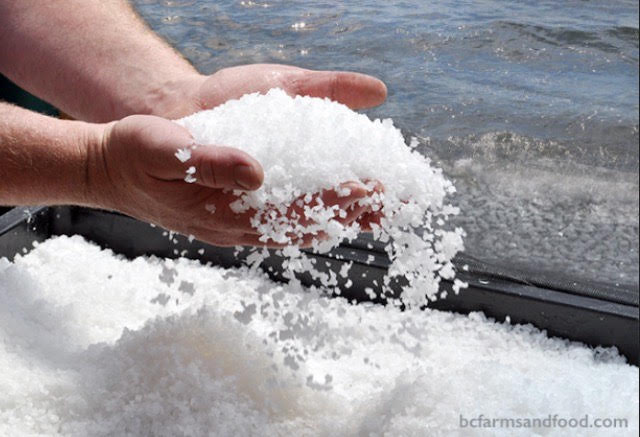
Sea salt is harvested by evaporating seawater. It is used as seasoning in foods and for preserving foods. It is also called bay salt or solar salt.
Production of sea salt has been dated to prehistoric times.
Folklore even tells a tail explaining how the sea became salty. There are many versions of the story from Finland, Norway, Sweden and Iceland, all involving a magic mill, which grinds salt and ends up at the bottom of the sea, generally due to someone’s greed.
Health benefits:
Sea salt is mostly composed of sodium chloride, a compound that helps regulate fluid balance and blood pressure in the body. Since it’s minimally processed, it contains some minerals, including potassium, iron, and calcium.
Sea salt aids in digestion, nourishes the adrenal glands, balances electrolytes and reduces fluid retention.
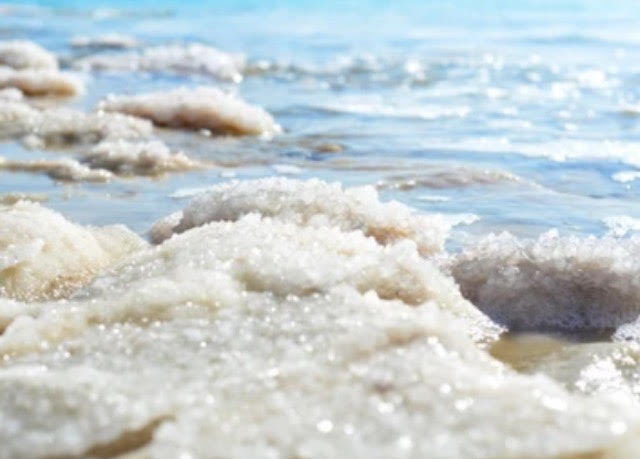
Metaphysical uses:
Sea salt possesses the healing powers of the ocean. You can add it to magical healing baths, incorporate it into spells or save it in a jar as a protective charm.
Sea Salt is known for its purifying, protective, and healing powers.
Black Salt
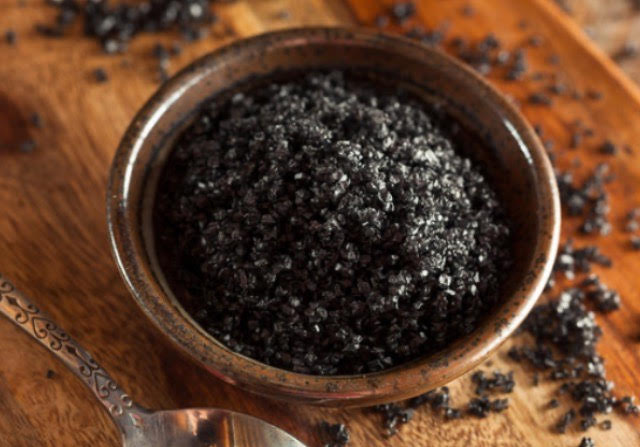
Black salt. also referred to as Kala Namak salt, is harvested from volcanic rock salt from the Himalayas, usually Pakistan.
Black salt has a very pungent odor and flavor and is therefore used in small quantities. This salt is seen as a great flavor enhancer and is used in dishes that have a strong flavor and aroma, such as curry, spicy dishes, pickles, and salads.
Health benefits:
This salt is rich in iron, magnesium and calcium. Is also has antioxidant properties and surprisingly low sodium levels.
Black salt stimulates bile production in the liver, and even helps control heartburn and bloating.
Due to its generous content of potassium, this salt also helps in easing muscle spasms and helps them in working properly.
Black salt for weight loss is an excellent addition to your diet if you are supposed to reduce your sodium intake while also avoiding water retention and bloating.
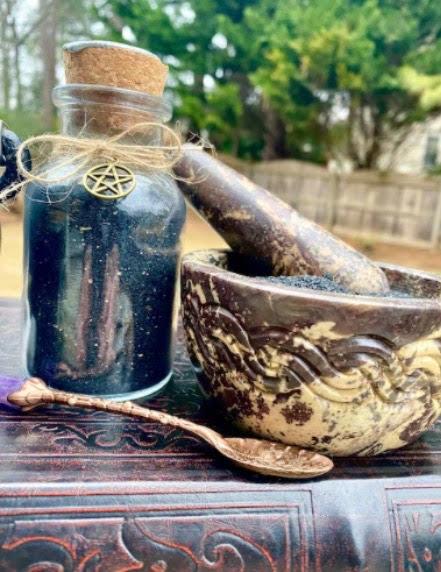
Metaphysical uses:
Black Salt has been used for many centuries for protection, cursing, hexing, banishing and reverse magick.
Black salt absorbs negative energies and left over, stagnant vibrations.
It can also absorb negative energies from your environmental circumstances and is often used in spells or magical workings to create boundaries, assist with spiritual barriers, and provide protection.
Persian Blue Salt

Persian Blue Salt is one of the rarest and oldest salts on the planet.
It is extracted from salt ponds in Semnan, Iran (formerly known as Persia) that formed over 100 million years ago.
The blue color comes from a mineral call sylvinite. Due to the fact that this salt is mined from a buried ancient sea, it is very clean and pure as it has not been exposed to any modern environmental pollutants or contaminants.
It is salty and spicy in flavor.
Health benefits:
As a potassium mineral, this salt brings benefits to the blood circulatory system, strengthens the heart, stabilizes blood pressure and helps digestion.
This mineral is essential for strong bones and teeth. It also supports healthy muscles and nerves.
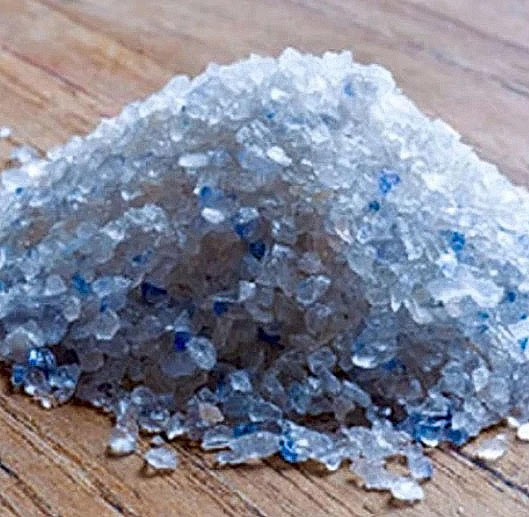
Metaphysical uses:
Persian Blue Salt is used in magic and rituals by Pagans, Wiccans, Hoodoo practitioners, people who practice witchcraft and by those who want a little psychic or spiritual help for its power with justice and legal matters.
This salt is know for it’s protection from The Evil Eye, bad energy or bad luck.
It also has great uses in magick for healing, tranquility, peace and absorbing negativity.
Celtic Sea Salt
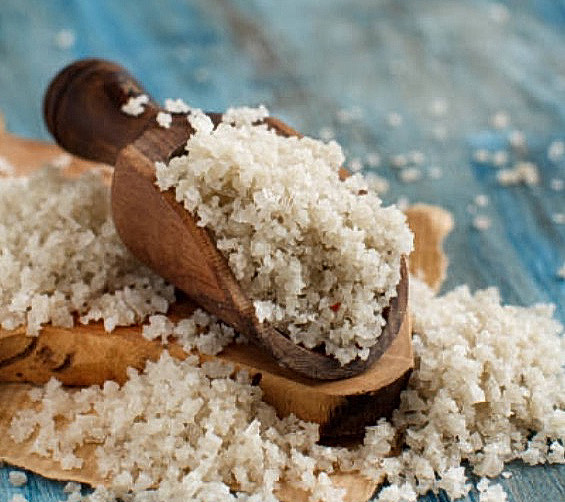
This high quality salt, harvested from the sea, has a superior flavor that enhances the natural profile of fruits and vegetables while strengthening the body.
Celtic sea salt originates from the coastal area near Brittany, France. It always remains a greyish damp salt no matter the conditions because of its moist nature.
After collecting from the seashore, it is dried in wind and sunlight. This salt contains 34 minerals that add to its nutritional profile.
Health benefits:
Rich in alkalizing minerals, Celtic Sea Salt energizes, replenishes electrolytes, fights bacterial infection, and aids digestion.
It helps to remove mucus and clear the congestion in the nasal cavity, aids in boosting the immune system, strengthens the heart, reduces the risk of high blood pressure and reduces muscle cramps. This salt also helps to prevent kidney stones, and controls the quantity of saliva production.
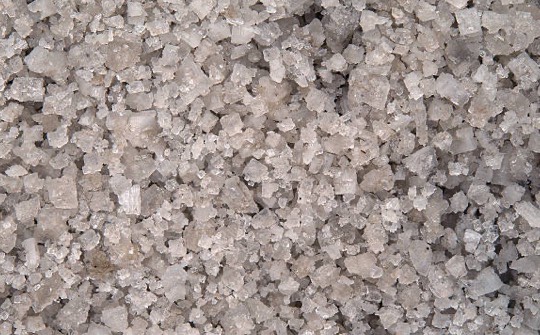
Metaphysical uses:
Celtic Sea Salt gives an extra metaphysical boost as far as spiritual intention or “power”.
In magic, this salt is excellent for repelling negative energies or entities, strengthening manifestation, cleansing, grounding, and banishing.
Place some Celtic Sea Salt under your bed to keep nightmares at bay. Or put some in a bowl near your windowsill to keep any dark intentions from crossing over into your space.
Alaea Red Salt
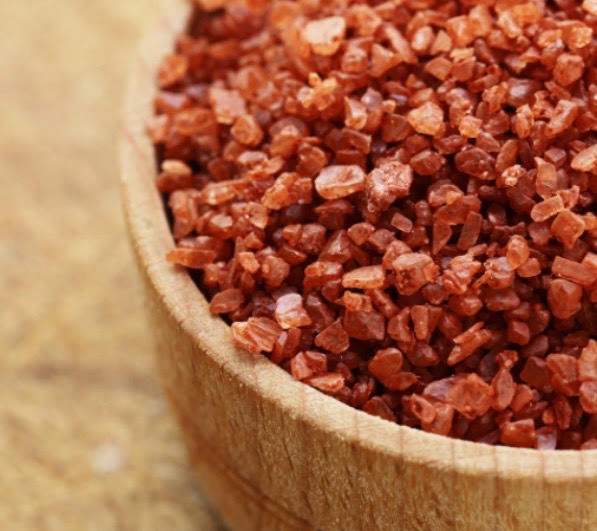
Alaea salt, sometimes referred to as Hawaiian red salt, is an unrefined sea salt that has been mixed with an iron oxide rich volcanic clay called “alaea” which gives the seasoning its characteristic brick red color.
It is part of Native Hawaiian cuisine and is used in traditional dishes such as kalua pig, poke and pipikaula (Hawaiian jerky).
Once exported to the Pacific Northwest to cure salmon, it saw a resurgence in popularity late in the 20th century.
Health benefits:
Alaea red salt is a natural sea salt product that is comprised of some 80 natural elements, electrolytes and trace minerals such as potassium and magnesium.
Red alaea is also rich in iron oxides, which makes for a great digestible form of dietary iron.
Not only is this salt mineral rich but it’s rich in flavor too.
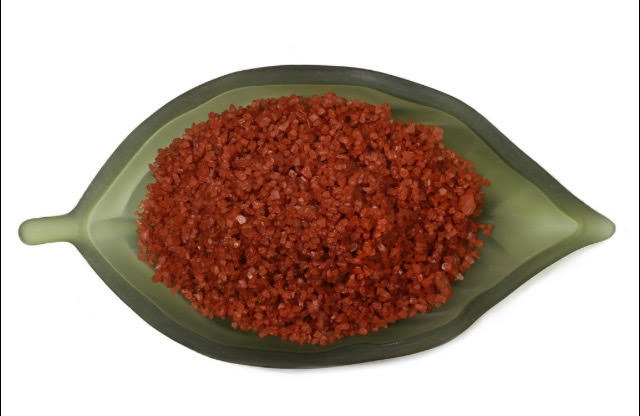
Metaphysical uses:
Traditionally, Alaea red salt was used to cleanse, purify and bless tools, canoes, homes and temples.
Native Hawaiians believed that the Red Alaea clay gave the salt its spiritual power. To this day, it is still used in traditional ceremonies, ritual blessings, and purifying purposes.
In general, this salt is alleged to help with protection, blocking negative energies, cleansing and casting circles. In a casting circle ritual, this salt would normally be placed around the area that the spell or ritual is about to be performed.
A salt circle is believed to help separate the energy of the ritual from the energy around the circle. When the spell is completed, the circle is then broken to release the energy.
Further Resources:
The volume is organized into two parts: Salt Histories and Salt in Society. Case studies from prehistory to post-Contact and from New York to Jamaica address what techniques were used to make salt, who was responsible for producing it, how it was used, the impact it had on settlement patterns and sociopolitical complexity, and how economies of salt changed after European contact. Noted salt archaeologist Heather McKillop provides commentary to conclude the volume.
